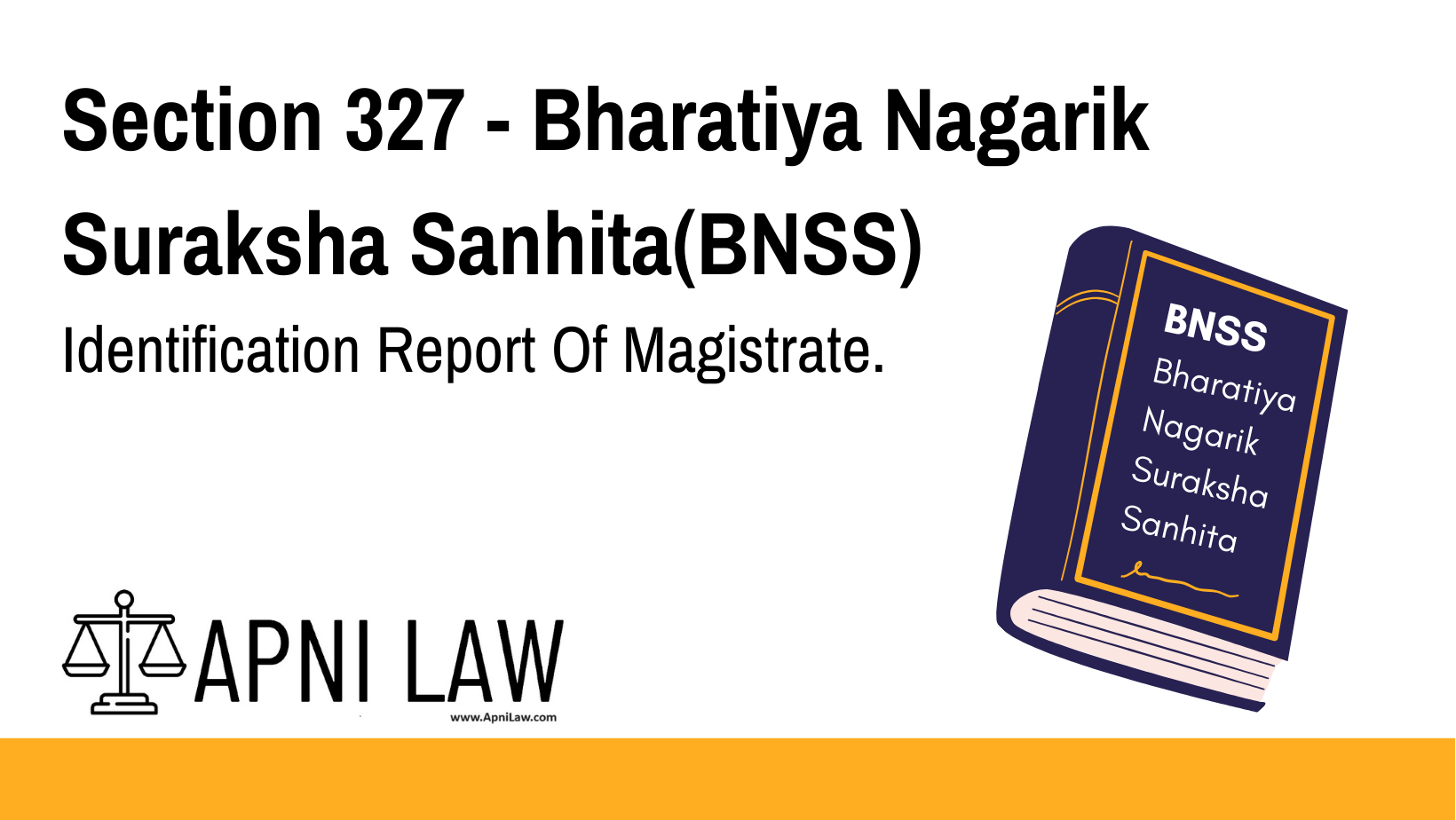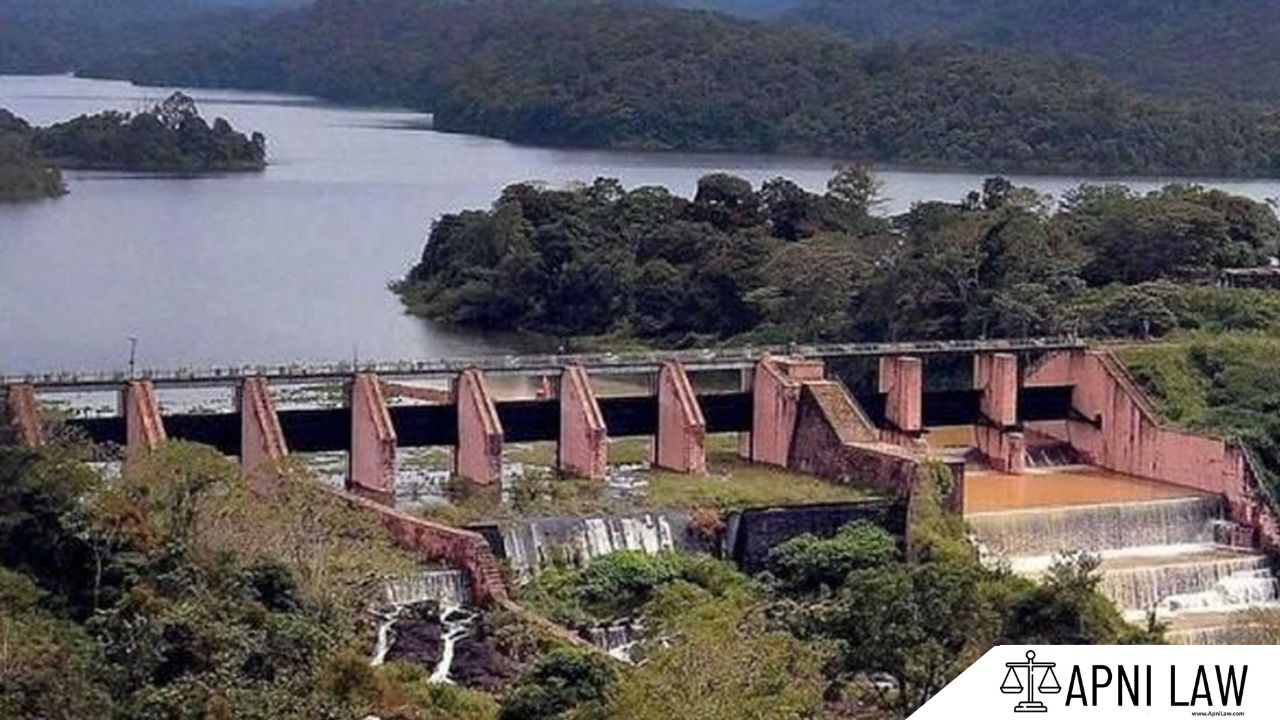Code: Section 327 BNSS
327. (1)
Any document purporting to be a report of identification under the hand of an Executive Magistrate in respect of a person or property may be used as evidence in any inquiry, trial or other proceeding under this Sanhita, although such Magistrate is not called as a witness:
Provided that where such report contains a statement of any suspect or witness to which the provisions of Section 19, Section 26, Section 27, Section 158, or Section 160 of the Bharatiya Sakshya Adhiniyam, 2023 apply, such statement shall not be used under this sub-section except in accordance with the provisions of those sections.
(2) The Court may, if it thinks fit, and shall, on the application of the prosecution or of the accused, summon and examine such Magistrate as to the subject-matter of the said report.
Explanation of Section 327 BNSS
Section 327 BNSS governs the admissibility and use of identification reports prepared by an Executive Magistrate. The key elements of this section are:
- Admissibility of Identification Reports:
A report prepared by an Executive Magistrate, which identifies a person or property, may be admitted as evidence in any legal proceeding under this Sanhita, even if the Magistrate who prepared the report is not called as a witness. - Restriction on Statements Covered by Other Provisions:
If the identification report contains statements from a suspect or a witness, and those statements are subject to the provisions of Section 19, Section 26, Section 27, Section 158, or Section 160 of the Bharatiya Sakshya Adhiniyam, 2023, then those statements must be used in accordance with the rules set out in those sections. This ensures that evidence derived from suspects or witnesses is handled with the appropriate safeguards. - Court’s Discretion to Summon the Magistrate:
The Court retains the power to summon and examine the Executive Magistrate regarding the contents and subject-matter of the identification report if either the prosecution or the accused applies for such examination. This allows the Court to clarify any ambiguities or issues arising from the report.
Illustration
Example 1: Use of an Identification Report in a Trial
In a property dispute case, an identification report prepared by an Executive Magistrate is submitted to establish the ownership and physical description of a property. Although the Magistrate is not called to testify in person, the report is accepted as evidence under Section 327. However, if the report includes statements from witnesses, these must comply with the provisions of Section 19 and others as applicable.
Example 2: Court Summoning the Executive Magistrate
During a criminal trial, the defense challenges certain aspects of an identification report prepared by an Executive Magistrate regarding the identification of a suspect. Acting on the defense’s application, the Court summons the Magistrate to examine him about the methodology and findings of the report, thereby ensuring the reliability of the evidence presented.
Common Questions and Answers on Section 327 BNSS
1. Can an identification report by an Executive Magistrate be used as evidence without calling the Magistrate as a witness?
- Answer:
Yes, under Section 327(1), such a report may be used as evidence in any proceeding under this Sanhita even if the Magistrate is not called to appear as a witness.
2. What happens if the report contains statements by a suspect or witness?
- Answer:
If the report includes statements by a suspect or witness that fall under Section 19, Section 26, Section 27, Section 158, or Section 160, such statements must be used in accordance with the provisions of those sections.
3. Does the Court have the power to summon the Executive Magistrate who prepared the report?
- Answer:
Yes, under Section 327(2), the Court may, if it thinks fit and on application by either party, summon and examine the Executive Magistrate regarding the report.
4. What is the purpose of using identification reports as evidence under Section 327?
- Answer:
The section allows identification reports to be admitted as evidence to streamline proceedings and incorporate technical findings, while also ensuring that any statements by suspects or witnesses are managed in accordance with prescribed legal safeguards.
Conclusion
Section 327 BNSS enables the use of identification reports prepared by Executive Magistrates as evidence in legal proceedings, facilitating the admission of crucial technical evidence without necessitating the personal appearance of the Magistrate. The provision also includes safeguards to ensure that any statements from suspects or witnesses are used in compliance with relevant sections of the Bharatiya Sakshya Adhiniyam, 2023. This balanced approach upholds both the efficiency of the judicial process and the integrity of the evidence presented. For more detailed legal insights and guidance on the application of this provision, visit ApniLaw.








